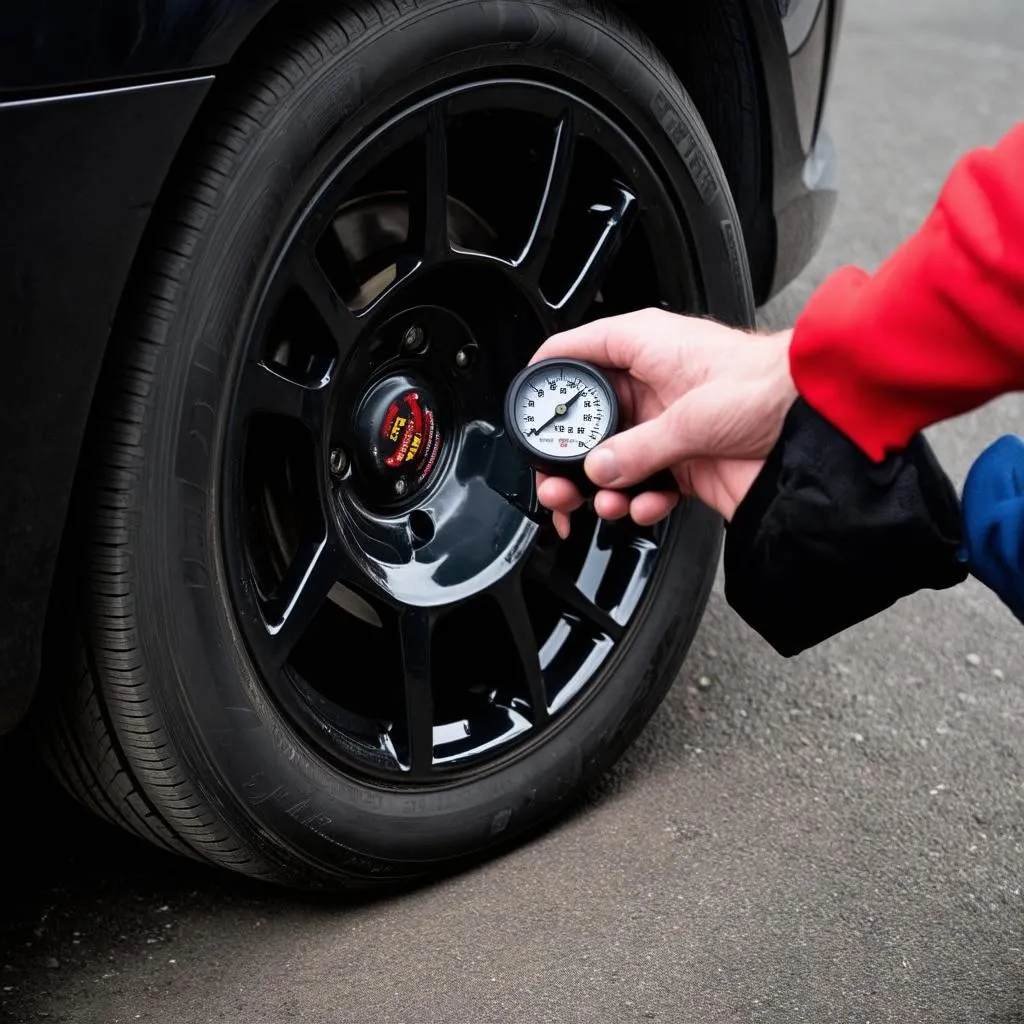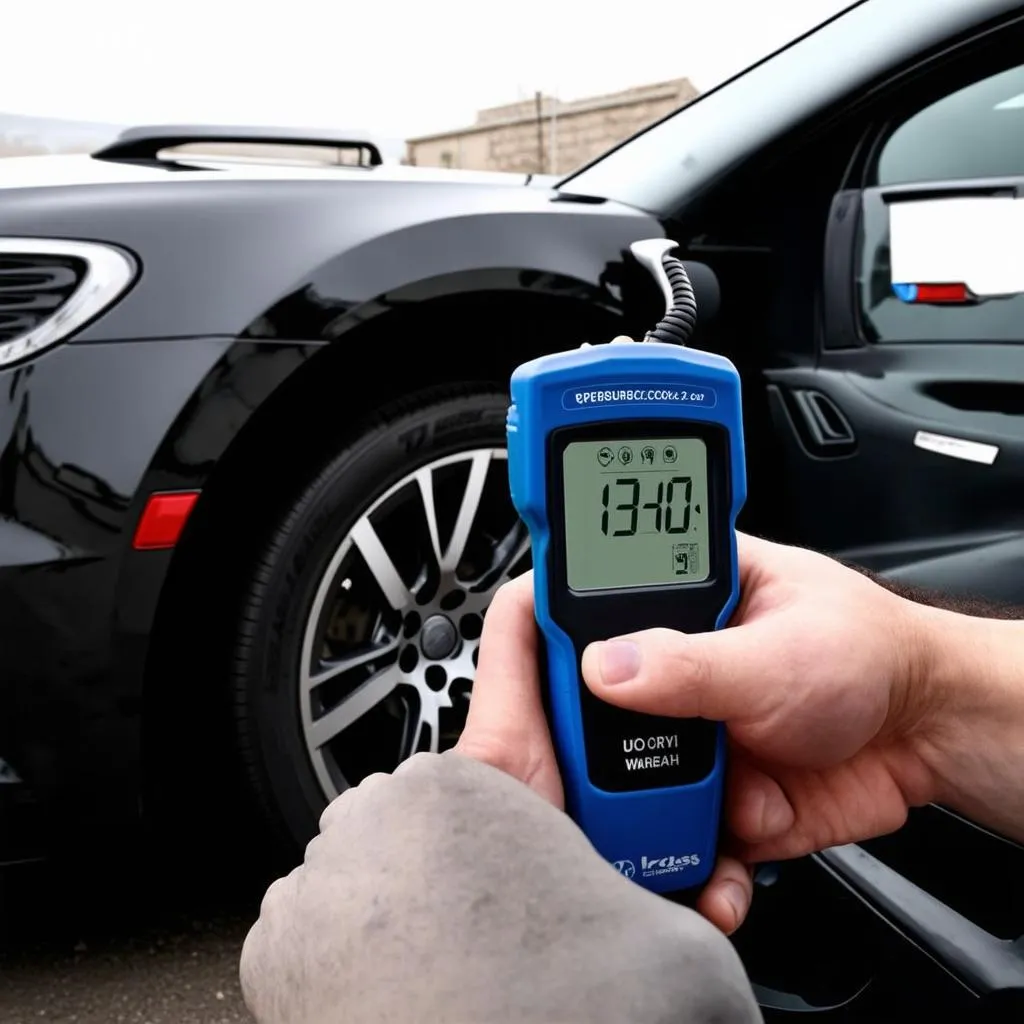Have you ever wondered why your car’s handling feels off, or why your fuel economy seems to be taking a nosedive? It could be a sign that your tyre pressure is not where it should be. Tyre pressure plays a critical role in your car’s performance, safety, and fuel efficiency. Fortunately, with the help of OBD (On-Board Diagnostics) technology, monitoring and maintaining your tyre pressure has never been easier.
What is Obd Tyre Pressure?
Obd Tyre Pressure is a system that utilizes your car’s OBD-II port to monitor and display the pressure of each of your tires. By connecting a compatible OBD2 scanner to your car’s port, you can access real-time data about your tyre pressure, and even receive alerts when pressure levels fall below a predefined threshold.
Understanding the Significance of Tyre Pressure
From a technical perspective, tyre pressure is the amount of air within a tyre, which directly influences its shape and how it interacts with the road. Low tyre pressure can lead to a variety of issues, including:
- Reduced fuel efficiency: Underinflated tyres increase rolling resistance, which consumes more fuel.
- Uneven tyre wear: A tyre with lower pressure will wear out faster, particularly on the outer edges.
- Reduced handling and braking: Low pressure can cause the car to handle poorly and increase braking distances.
- Increased risk of tyre blowouts: Underinflated tyres are more susceptible to overheating and blowouts.
From a financial standpoint, maintaining proper tyre pressure can save you money on fuel and tyre replacements.
The Psychological Perspective of Tyre Pressure
Tyre pressure can also have a psychological impact on drivers. Imagine yourself driving down a winding road with a car that feels “off”. This feeling of uncertainty can be unnerving and lead to increased stress and anxiety. Proper tyre pressure contributes to a more confident and relaxed driving experience.
Obd Tyre Pressure: Beyond the Basics
What is a Tyre Pressure Monitoring System (TPMS)?
Many modern cars are equipped with a TPMS (Tyre Pressure Monitoring System), which can be either direct or indirect. Direct TPMS uses sensors embedded in each tyre to measure pressure and transmit data to the car’s computer. Indirect TPMS monitors tyre pressure by analyzing the difference in rotation speed of the wheels, which is affected by tyre pressure.
Connecting the Dots: How Does Obd Tyre Pressure Work?
OBD Tyre Pressure, through compatible OBD2 scanners, allows you to access and interpret data from your car’s TPMS. These scanners can display information about each tyre’s pressure, and sometimes even temperature. Some scanners even offer alerts for low tyre pressure, allowing you to address the issue promptly.
The Importance of Routine Tyre Pressure Checks
While OBD Tyre Pressure provides a convenient way to monitor tyre pressure, it’s still essential to perform regular visual inspections of your tyres. Look for signs of damage, uneven wear, or other abnormalities.
Obd Tyre Pressure: Beyond the Physical
The Spiritual Perspective of Tyre Pressure
Some believe that tyre pressure, like other aspects of our car’s condition, can be symbolically connected to our personal journeys. Proper tyre pressure represents a balanced and grounded approach to life, while neglecting it can be seen as a sign of neglecting our own needs and well-being. This perspective encourages us to pay attention to both the physical and metaphorical aspects of our journeys.
Harnessing the Power of Tyre Pressure
Maintaining proper tyre pressure can empower us to have more control over our lives, just as it empowers us to have control over our cars. By addressing issues promptly, we create a smoother and more enjoyable experience on the road of life.
FAQ (Frequently Asked Questions)
Q: How often should I check my tyre pressure?
A: It’s recommended to check your tyre pressure at least once a month, or more often if you regularly drive on rough roads or in extreme weather conditions.
Q: What is the ideal tyre pressure for my car?
A: The ideal tyre pressure for your car can be found in your owner’s manual or on a sticker located on your driver’s side door jamb.
Q: What if my car doesn’t have a TPMS?
A: If your car doesn’t have a TPMS, you can still use an OBD2 scanner with tyre pressure monitoring capabilities.
Q: What are some common causes of low tyre pressure?
A: Some common causes of low tyre pressure include:
- Slow leaks: A small puncture or a slow leak in the valve stem can cause gradual pressure loss.
- Temperature changes: Cold weather can cause tyre pressure to drop, while hot weather can cause it to rise.
- Over-inflation or under-inflation: Incorrect tyre pressure can also contribute to pressure fluctuations.
Obd Tyre Pressure: A Powerful Tool for Any Driver
OBD Tyre Pressure is a valuable tool for any car owner, providing a simple and efficient way to monitor and maintain tyre pressure. By taking advantage of this technology, you can not only ensure your safety and maximize fuel efficiency, but also experience the added benefit of a smoother and more confident driving experience.
 tyre pressure monitoring
tyre pressure monitoring
 obd scanner
obd scanner
Need help with setting up your OBD2 scanner for tyre pressure monitoring? Our team of experts is here to help! Contact us at +84767531508 via WhatsApp for 24/7 support.
Stay tuned for more insights and tips on car maintenance, repair, and technology on our website, TechCarUSA.com!